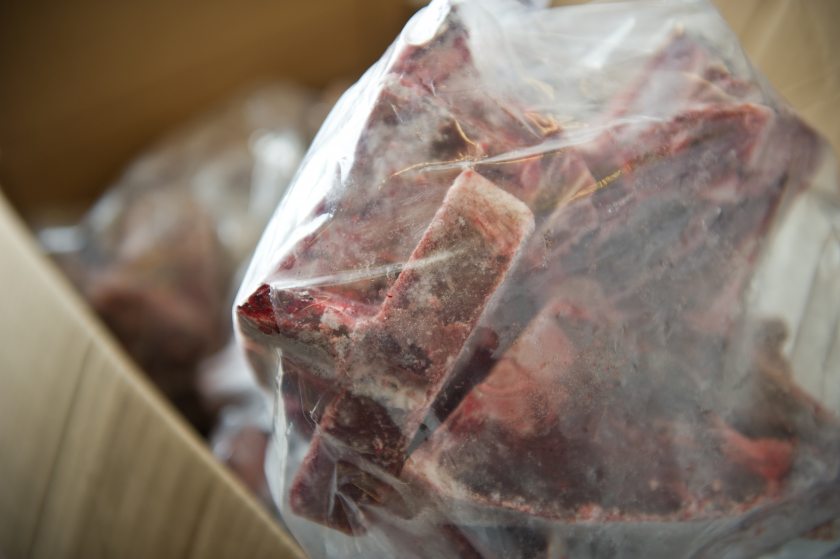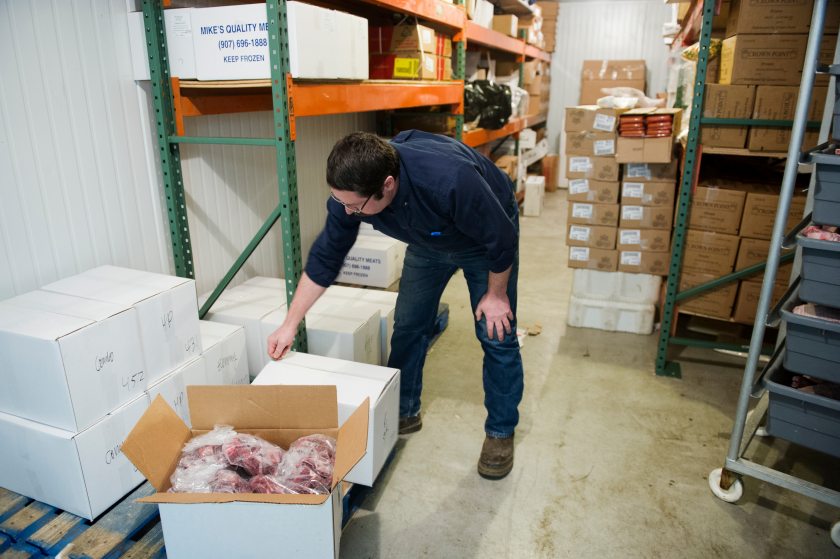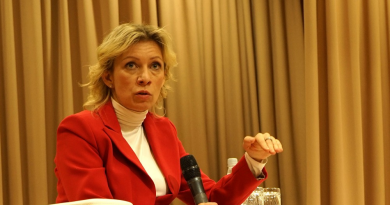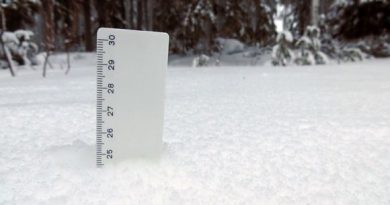Alaska community gets into reindeer meat market

Lifelong Savoonga resident Richmond Toolie couldn’t wait to talk about the reindeer herd he manages.
But there was a catch Wednesday: Toolie, 52, had to meet a plane — the first in days — making its way to St. Lawrence Island, 164 miles off Alaska’s western coast in the Bering Sea. The plane was set to carry precious cargo for Savoonga villagers: reindeer meat they hope will provide much-needed cash in the mostly subsistence economy of the village of 650.
“Mother Nature is getting ready for all the sea mammals,” Toolie said of the snowy, windy weather. While those conditions are good for the walrus and whales St. Lawrence islanders will look to hunt this spring, it’s not so great for planes trying to get in and out.
It was those marine mammals — or really, a lack thereof in 2013 — that spurred the people of Savoonga to take greater advantage of another natural resource in its free-roaming reindeer herd.
2013 economic disaster
For a village that relies heavily on walrus not only for food but for cash generated by ivory sales, 2013 brought an economic disaster for the communities of Gambell and Savoonga, with the state issuing a disaster declaration allowing them to access emergency-relief funds.
The situation served as a wake-up call for Savoonga. Fearing another year of poor harvests, the village came together to expand its economy and get more access to cash — crucial in a place where food can cost triple what it does in urban Alaska and gas costs $6.50 a gallon.
“We have great deer out here. We might as well make use of it,” said herder Michael Karalik, 24. “It’s something good to lean on for the winter.”
“Instead of wringing their hands and crying about it, they actually did something about it,” said Greg Finstad, program manager for the UAF reindeer research program and a faculty member at UAF’s Northwest campus. Finstad developed and now runs the high-latitude range management program, a certificate program that caters to animal herders in the region.
One of few herds in Northwest Alaska
The reindeer herd is one of only a few in Northwest Alaska. It is owned by the Savoonga tribal council, which means members of the tribe have access to the animals. There have been limited sales for years, but with help in the form of a federal mobile processing facility delivered to the island in March, the council hopes to give markets and restaurants even more access to the locally grown meat.
Finstad said villagers could safely harvest 600 to 800 reindeer each year from its herd of about 3,000. With each carcass selling for $1,000 to $1,500, that’s major money for the village.
In an effort to help promote that, Finstad and others traveled to Savoonga in March to provide a course for villagers in processing reindeer meat according to state and federal standards.
But Finstad gets the sense that it goes beyond just another class for villagers. In a phone interview, Finstad said the class started with 17 students but grew to 25. Class sizes usually shrink, he said. But as word got out, more people kept showing up.
“I’m so in awe with the people out there,” he said. “As an educator, it was great.”
Finstad also brought with him the university’s U.S. Department of Agriculture mobile processing unit, a Conex trailer that will stay on the island for the next two or three years. Finstad said the goal is to give villagers a chance to learn on the unit so they can decide whether it’s feasible to build their own.
Currently villagers can do a “field slaughter” with the reindeer — process the animal in the field under strict guidelines and sell the meat to a small list of retailers, many in the Nome area.
The USDA unit allows them to slaughter and process animals in such a way they can sell the meat to a broader range of markets and restaurants. They could make value-added products if they want, including sausage and other prepared meats, Finstad said.
Certain caveats

The field-processed animals come with certain caveats — including that the meat must be frozen from the time it’s killed until it is sold to the end user. Even then, the meat comes with a note saying it must be cooked to 160 degrees to be safe to eat. Animals processed in the new facility will not have such restrictions and will be sold in a manner similar to that of any other commercial meat.
State veterinarian Bob Gerlach said having access to that USDA stamp means bigger gains for producers, who can sell their meat for a higher price.
It also means better food safety, Gerlach said. For example, if there is a food-borne outbreak of disease in USDA-certified food, it can be traced back to the source.
It’s been a challenge to keep reindeer meat in stock, according to Greg Giannulis, owner of Mike’s Quality Meats in Eagle River. He’s been buying the meat for the past month. The butcher shop gets its reindeer from many villages in Northwest Alaska, Giannulis said. No matter where it comes from, it always sells quickly.
Giannulis wouldn’t say exactly how many pounds of reindeer meat he sells a month, but with more people interested in local food, he said, he could easily double his sales.
“People can’t get enough,” he said.
That’s a sentiment the people of Savoonga are happy to hear about.
“It makes me feel great,” Toolie said. “It’s a little income and employment for people who took classes. It’s a long winter with no jobs out here.”
Related stories from around the North:
Canada: Canadian senator proposes nation-wide “seal products day”, Radio Canada International
Finland: Rare white elk judged fair game in Finland, protected in Sweden, Yle News
Greenland: What the EU seal ban has meant for Inuit communities in the Arctic, Eye on the Arctic
Iceland: Endangered whale meat shipped from Iceland via Halifax, The Canadian Press
Sweden: Sami villages under-report elk hunt kills in Sweden, Radio Sweden
United States: Landmark Alaska subsistence decision stands, Alaska Public Radio Network



